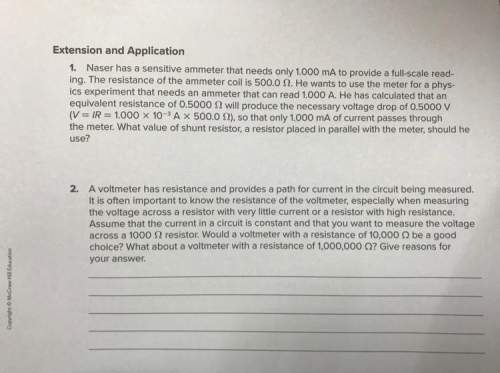
Physics, 03.03.2020 03:51 kealinwiley
As you are assisting in the investigation, you notice that Polly's apartment has maintained a cozy temperature of 21°C (70°F) even though her heat had been turned off and it's a cold winter's day. (Could this be another clue?) One explanation is that her apartment has nice double pane windows, consisting of two glass panes that are each 4-mm thick sandwiching a well-sealed air gap 6-mm thick. In "steady state", the rate that heat flows through a glass pane equals the rate that heat flows through the air gap in the double pane window (otherwise there would be a net heat flow into the air or window, changing its temperature-whatever flows into one of these materials must flow out to maintain a given temperature). Since the thermal conductivity of still air [O.025 W/(m°C) is much smaller than the thermal conductivity of glass [0.80 W/(m°C)l, the temperature difference across the double pane window is almost entirely over the air gap. (Again, in this steady state, the rate of heat flow through the glass and air are the same for the double pane window, so if the conductivity of air is much smaller than that of glass, the temperature difference across the air must be much larger than that across the glass for these windows.) Considering this, what is the ratio of the rate of heat flow through a cheap window with a single pane of glass 4-mm thick compared to a nicer double pane window with an air gap of 6 mm if the temperature difference across them is the same (and they have the same areas)? Neglect heat leaks at the edges of the windows.

Answers: 3


Another question on Physics

Physics, 21.06.2019 23:40
What is meant by the statement" the melting poin of glycerine is 13 degree celsius
Answers: 3

Physics, 22.06.2019 01:00
First, launch the video below. you will be asked to use your knowledge of physics to predict the outcome of an experiment. then, close the video window and answer the question at right. you can watch the video again at any point. part a as in the video, we apply a charge +q to the half-shell that carries the electroscope. this time, we also apply a charge –q to the other half-shell. when we bring the two halves together, we observe that the electroscope discharges, just as in the video. what does the electroscope needle do when you separate the two half-shells again? view available hint(s) as in the video, we apply a charge + to the half-shell that carries the electroscope. this time, we also apply a charge – to the other half-shell. when we bring the two halves together, we observe that the electroscope discharges, just as in the video. what does the electroscope needle do when you separate the two half-shells again? it deflects more than it did at the end of the video. it deflects the same amount as at end of the video. it does not deflect at all. it deflects less than it did at the end of the video. submit
Answers: 2


Physics, 22.06.2019 10:30
What are two different ways you could find the value of a? explain these methods.
Answers: 2
You know the right answer?
As you are assisting in the investigation, you notice that Polly's apartment has maintained a cozy t...
Questions






Spanish, 05.10.2020 15:01

Chemistry, 05.10.2020 15:01



Computers and Technology, 05.10.2020 15:01


Mathematics, 05.10.2020 15:01

Mathematics, 05.10.2020 15:01

Geography, 05.10.2020 15:01

Mathematics, 05.10.2020 15:01





Physics, 05.10.2020 15:01




